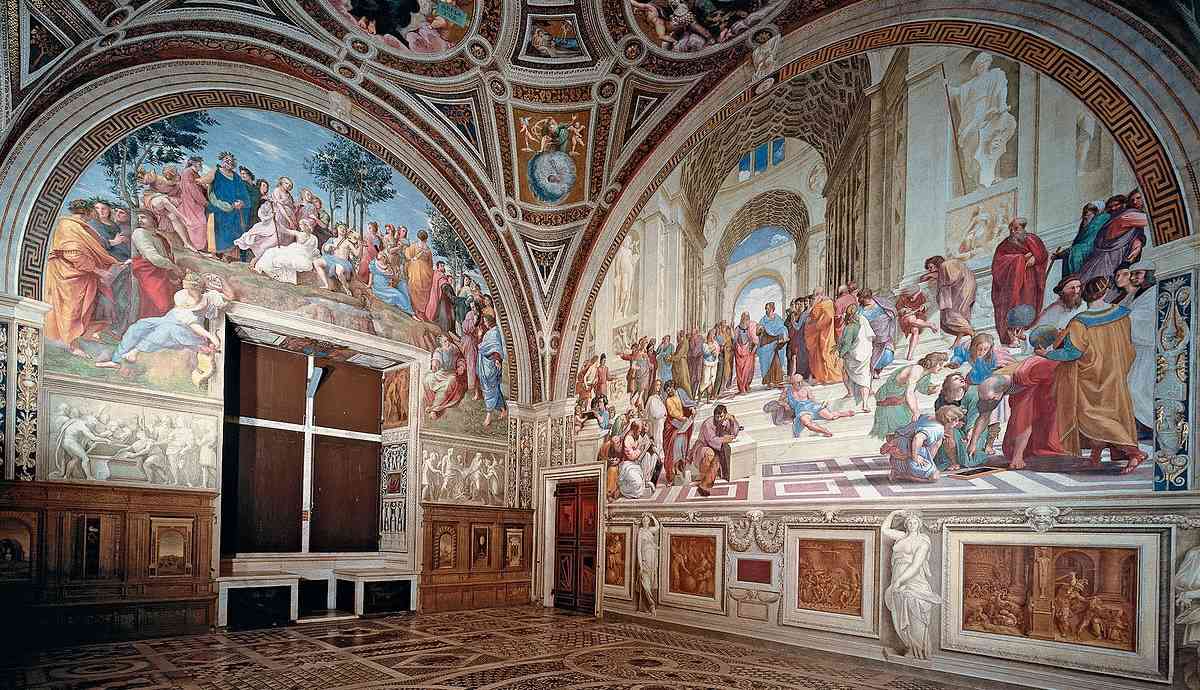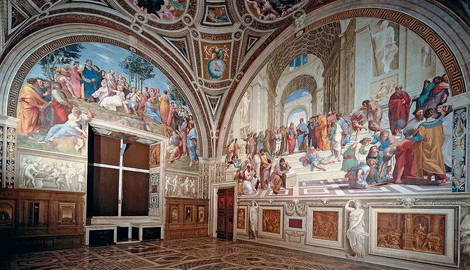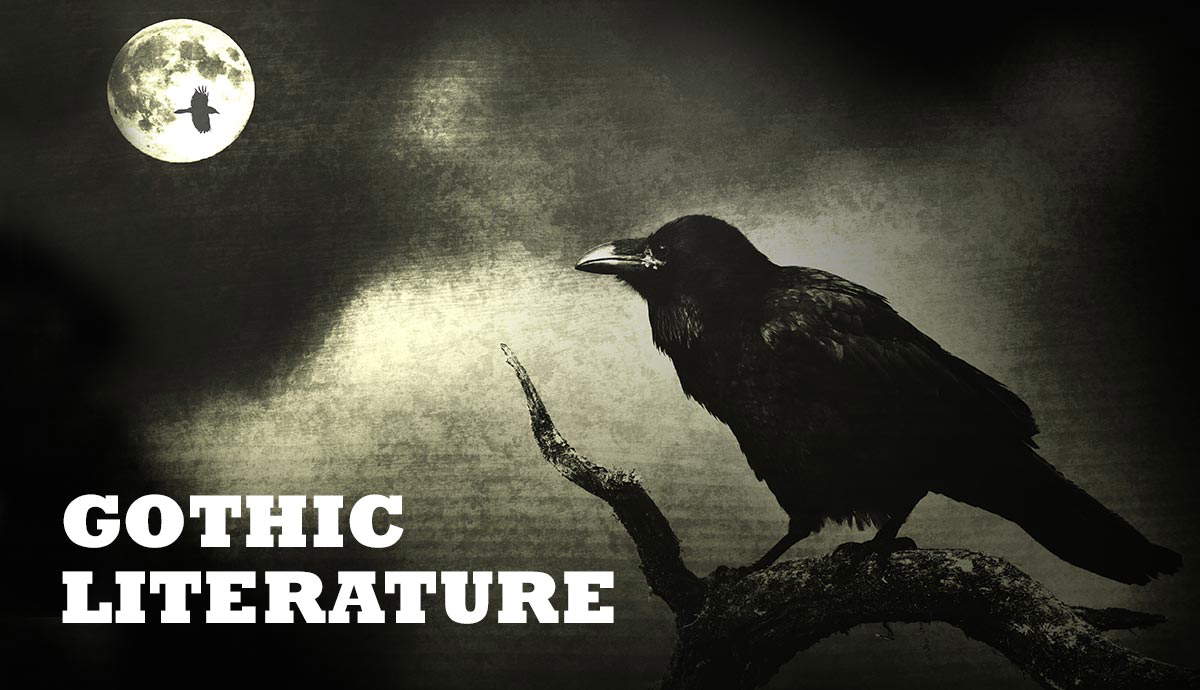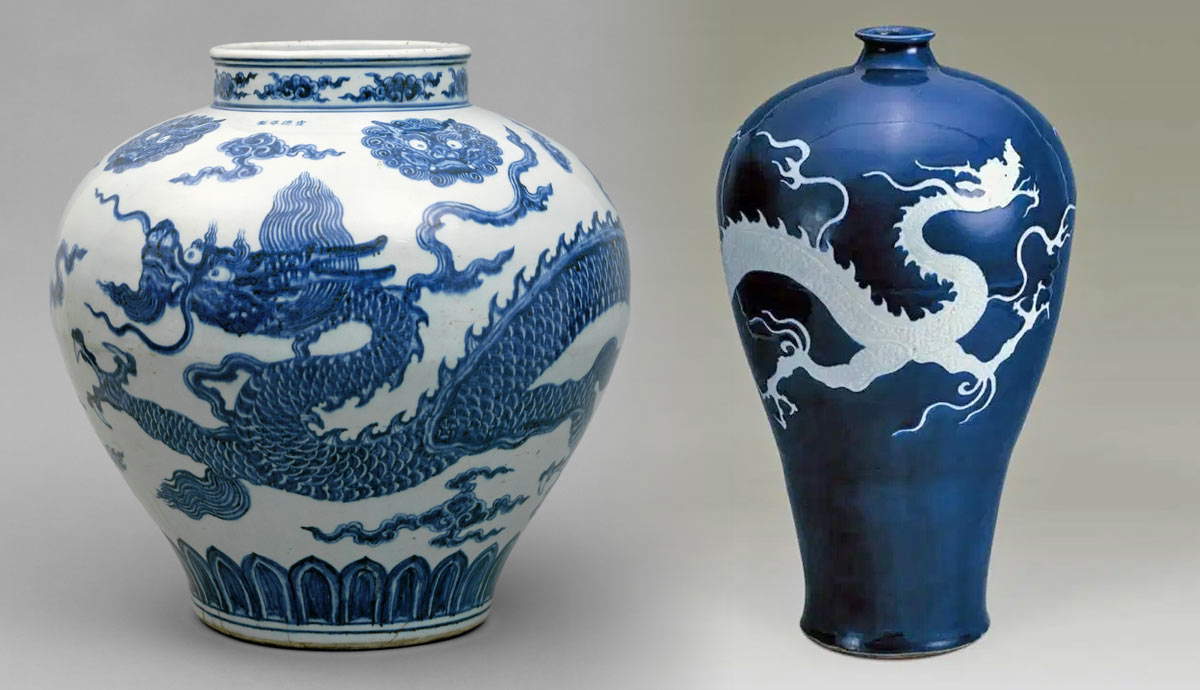
Entering the Raphael Rooms is like stepping through a portal to the heart of the Italian Renaissance. In the early 16th century, at the peak of the storied art movement, Raphael and his workshop painted a spectacular suite of papal apartments in the Vatican.
The resulting frescoes exemplify the artistic achievement and aesthetic grandeur of the era. Centuries later, the Raphael Rooms remain an important time capsule, as well as a popular tourist attraction. But beneath the brushstrokes, the frescoes also contain forgotten stories of one of art history’s greatest achievers.
What Are the Raphael Rooms?

The Stanze of Raphael, or the Raphael Rooms, are a suite of four papal apartments situated on the second floor of the Vatican’s Apostolic Palace. Pope Julius II, who led the Catholic Church from 1503 to 1513, commissioned the suite. He sought to establish a brand-new papal residence that showcased the pontiff’s spiritual authority and reflected the spirit of the High Renaissance. Julius II personally selected Raphael and his workshop to take on the pictorial decoration of the space.
Today, the Raphael Rooms are part of the Vatican Museums in Vatican City. Alongside Michelangelo’s Sistine Chapel ceiling, which also belongs to the Vatican Museums, the Raphael Rooms are among Rome’s most important High Renaissance fresco sequences.
Raphael’s Rise: The Genius Behind the Masterpieces

Raffaello Sanzio da Urbino (1483-1520), known in English as Raphael, was a leading artist and architect of the Italian Renaissance. Alongside Michelangelo and Leonardo da Vinci, Raphael is regarded as one of the greatest masters of the era for his harmonious compositions and masterful use of vibrant colors. His work in the Vatican especially showcases his ability to craft intellectually and aesthetically rich narratives.
Raphael ran an impressively large workshop and produced a substantial body of work despite his early death at the age of 37. When Pope Julius II summoned him to Rome in 1508, he had already established a reputation as a talented young artist. Raphael’s vision for the papal apartment renovations quickly impressed the Pope, who entrusted the entire project to the rising Renaissance star.
Decoding the Frescoes of the Raphael Rooms

The Stanze di Raffaello, or Raphael Rooms, comprise four series of frescoes:
Stanza della Segnatura (“Room of the Signature”)
The Room of the Signature was the first of the Raphael Rooms to be painted. Its frescoes were completed in 1511. The space originally served as Pope Julius II’s library. The paintings reflect this purpose with their overarching themes of intellectual and spiritual harmony. Among these frescoes is The School of Athens, an iconic work that celebrates philosophy and rational truth. Nearby, The Disputation of the Holy Sacrament emphasizes theology and divine truth. Together, the frescoes highlight the important interplay between seemingly disparate worldviews, which was reflected in Pope Julius II’s wide-ranging library collection.
Stanza di Eliodoro (“Room of Heliodorus”)
Painted between 1511 and 1514, the Room of Heliodorus was likely intended as a private audience chamber. Its frescoes center on the theme of divine intervention on behalf of the Catholic Church. The room is named after one of these frescoes, titled “The Expulsion of Heliodorus from the Temple.“ Raphael’s painting style evolved between the first and second rooms. Compared to the more static images in the Pope’s library, the frescoes in the Room of Heliodorus are dramatic and expressive.
Stanza dell’Incendio del Borgo (“Room of the Fire in the Borgo”)
By the third room in the series, Raphael was relying on his workshop to help execute his designs. The frescoes, painted between 1514 and 1516, depict events from the lives of Popes Leo III and Leo IV. Because Pope Julius II had died in 1513, the room was prepared as a music room for his successor, Pope Leo X. It is named for the central Fire in the Borgo fresco, in which Pope Leo IV makes the sign of the cross to miraculously extinguish a fire in Rome’s Borgo district.
Sala di Costantino (“Hall of Constantine”)
The final and largest of the four rooms, this hall is dedicated to the triumph of Christianity over paganism under the reign of Constantine. The frescoes depict the struggles and victories of Constantine’s life. Raphael died before the frescoes were completed, so his workshop saw his original designs through to the end. Originally, visitors to the Raphael Rooms would not have followed the sequence in which the Stanze were painted. Rather, they would have entered the apartment via the Hall of Constantine.
How Restoration is Rewriting Art History

In recent years, extensive restoration efforts at the Raphael Rooms have uncovered surprising new insights into the artist’s creative process. The Associated Press reported in June 2025 that a decade-long restoration of the Hall of Constantine revealed that Raphael used a “novel mural painting technique.” Vatican technicians discovered that, in the execution of two figures on opposite corners of the hall, Raphael applied oil paint directly onto the wall instead of using the traditional fresco technique, in which paint is applied to wet plaster.
Raphael died before the Hall of Constantine was completed, so his innovative vision was not fully realized. However, newly discovered insights profoundly expand our understanding of the young artist’s ambitions. With frescoes that are both historical documents and living works of art, the Raphael Rooms remain a multifaceted testament to High Renaissance art, the power of the papacy, and Raphael’s unparalleled artistry.










